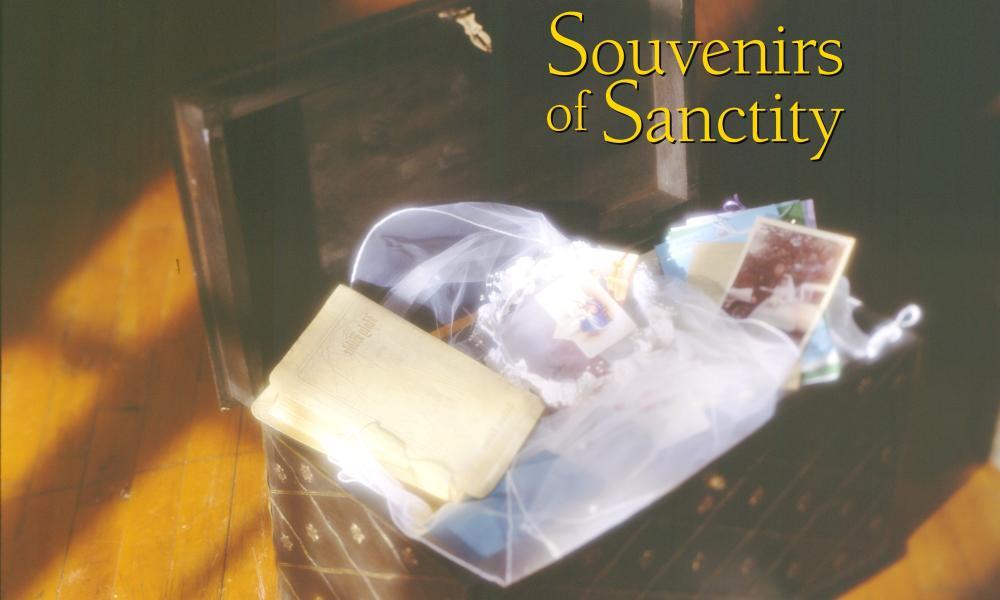
Souvenirs of Sanctity
Photo albums, videotapes and scrapbooks are ways to keep memories at hand, but a time capsule is another way to preserve memories for the future. A note to a godchild on his or her baptismal day or a love letter written to a spouse on a wedding day are ways to remember the special sacrament received on that occasion.
Use acid-free paper to record the events of the day or write special notes to a child or spouse. Document life in the Catholic Church today and compare it to the future. Those people who grew up through the 1950s and 60s and experienced the changes of Vatican II will note extreme changes in the Mass and also in preparation for certain sacraments.
By gathering mementos of each sacrament a family member receives through the years and keeping them together in an exclusive, special place, one not only records the holy event, but protects and preserves information and items for future generations. A special place for these souvenirs of sanctity, or a time capsule of sorts, will allow children and grandchildren a priceless opportunity to view their past.
12 Preservation Hints and Tips
- Do retain a detailed record listing the items placed in the time capsule. List the reason for the time capsule, the contributors and who will be present at the sealing of the capsule. Describe the color and composition of each article to help future researchers to identify items and to also help with further conservation. Retain one copy of this information and include one copy inside the time capsule.
- Do use cotton gloves when handling items prior to insertion and try to maintain a clean, pollution-free environment for the materials. Oil from fingers can soil items and may cause corrosion on contact with airborne pollutants.
- Don’t include unstable items which may release gas or deteriorate. Rubber and wool release sulfur gas; wood must be sealed away from metal objects or electronic equipment. Polyethylene can permeate moisture as it ages so it must be encapsulated in a waterproof container. PVC will break down and release acids into the capsule.
- Do place any suspect items in sealed, nonpermeable, airtight bags.
- Do use archival inks, archival stable watercolors and archival quality papers.
- Don’t use unstable mediums to create written, drawn or painted items.
- Do deacidify newsprint and other papers.
- Do include photocopies produced using stable quality processes, preferably black-toned print (not color) produced on archival quality photocopy paper.
- Don’t include thermally produced facsimile or scanner/plotter papers.
- Do include information about how various items were created, including software packages and format of equipment. Include instruction for playback of any recording equipment.
- Do use papers with a pH of 6.0 to 8.5, alkaline buffered, lignin- and sulfur- free, and use only archival quality adhesives.
- Do record the location of the time capsule and tell others of its location.
Baptism
- Baptismal certificate
- Baptismal candle
- Baptismal garment
- Special note to baby from godparents
- Family tree genealogy
- Parents’ thoughts and aspirations for baby’s future
Sacrament of matrimony
- Copy of marriage license
- Marriage certificate
- Engagement announcement
- Program, guest list
- Photos, video
- CD of couple’s “wedding song”
- Cake ornament
- An unopened love letter written to spouse
- Prediction of couple’s future together
Holy Eucharist
- First Communion certificate
- First Communion picture
- Child’s prayer journal
- Rosary
- Scapular
- Prayer book
- Dress, veil, gloves
- Tie or tie tack
Confirmation
- Confirmation certificate
- Copy of letter written to bishop
- List of preparations for sacrament, i.e. service projects performed
- Special note from sponsor
- Note explaining why child selected his or her confirmation name
Holy orders
- Cloth that is used to remove Chrism from hands of newly ordained
- Holy cards with date of ordination and first Mass
- Ordination program
- First homily
- Blessed items by new priest
- Newspaper clippings of event



